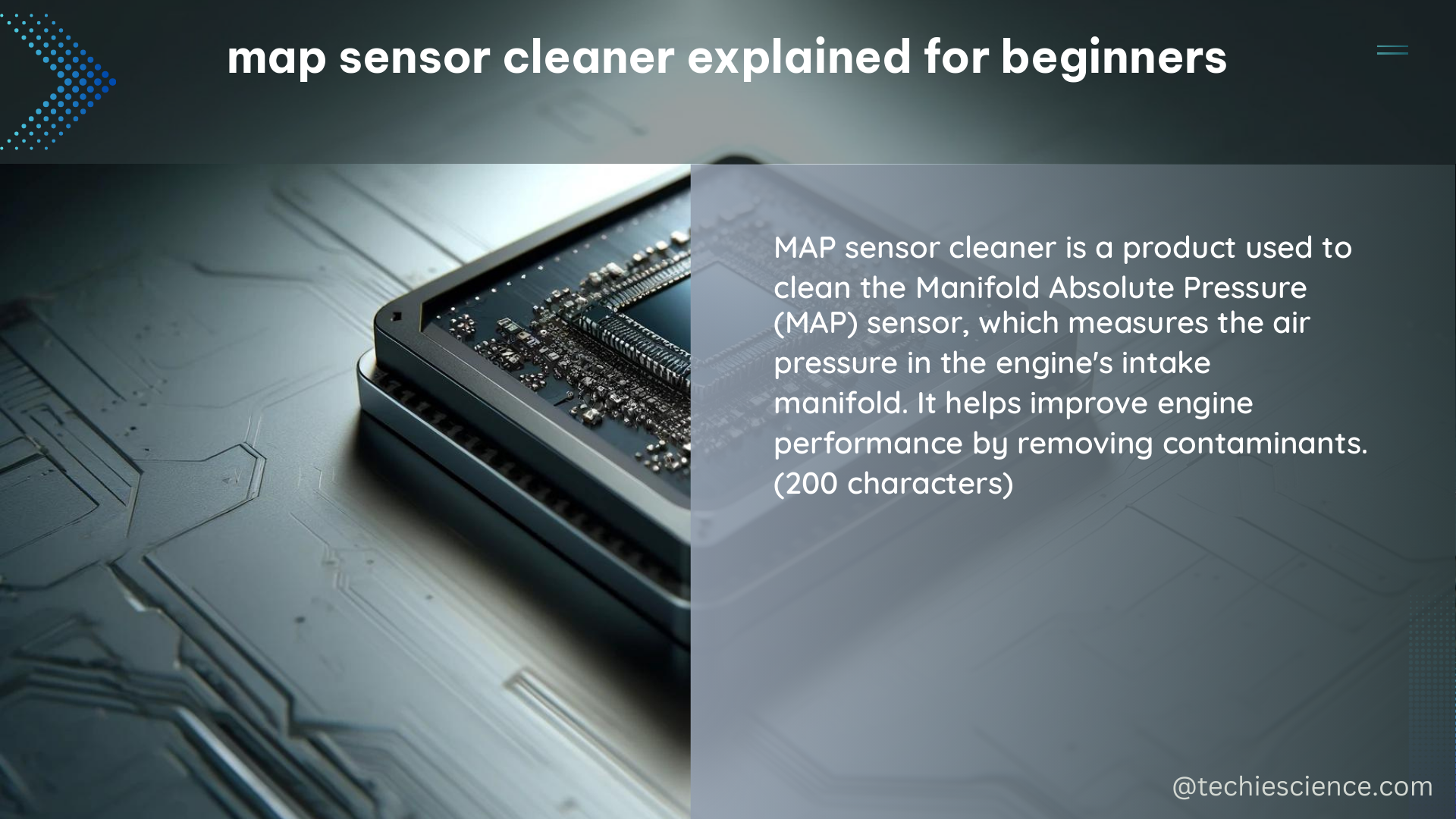A MAP sensor, or Manifold Absolute Pressure sensor, is a critical component in modern internal combustion engines, responsible for providing vital data to the Engine Control Unit (ECU) for optimizing fuel injection, ignition timing, and turbocharger boost levels. Over time, this sensor can become contaminated with dirt and debris, leading to various performance issues. Cleaning the MAP sensor is a straightforward process that can often restore its functionality without the need for expensive replacement.
Understanding the MAP Sensor
The MAP sensor measures the pressure inside the engine’s intake manifold, which fluctuates based on the engine’s load and operating conditions. This information is then relayed to the ECU, which uses it to make real-time adjustments to the engine’s fuel delivery and ignition timing. A clean and properly functioning MAP sensor is essential for maintaining optimal engine performance, fuel efficiency, and emissions compliance.
MAP Sensor Specifications
- Typical operating voltage range: 0-5 volts
- Pressure range: 0-100 kPa (0-14.5 psi)
- Accuracy: ±1.5% of full scale
- Operating temperature range: -40°C to 125°C (-40°F to 257°F)
- Response time: less than 10 milliseconds
Causes of MAP Sensor Contamination

The MAP sensor is exposed to the engine’s intake air, which can contain various contaminants, such as:
- Dirt and Debris: Over time, dust, dirt, and other particulates can accumulate on the sensor’s surface, affecting its ability to accurately measure the intake manifold pressure.
- Oil and Fuel Residues: Combustion byproducts, including oil and fuel residues, can also build up on the sensor, leading to inaccurate readings.
- Environmental Factors: Exposure to extreme temperatures, humidity, and other environmental conditions can contribute to the degradation of the sensor’s performance.
Symptoms of a Dirty MAP Sensor
A contaminated MAP sensor can cause a range of performance issues, including:
- Poor Fuel Economy: The ECU may not be able to accurately adjust the fuel-air mixture, leading to inefficient combustion and reduced fuel economy.
- Rough Idling: Incorrect pressure readings can cause the engine to run rough or stall at idle.
- Engine Surges: Fluctuations in the MAP sensor’s output can result in uneven power delivery and engine surges.
- Stalling: In severe cases, a malfunctioning MAP sensor can cause the engine to stall unexpectedly.
- Check Engine Light: The ECU may detect a problem with the MAP sensor, triggering the check engine light on the dashboard.
MAP Sensor Cleaner Specifications
MAP sensor cleaners are specialized cleaning solutions designed to safely and effectively remove contaminants from the sensor without causing damage. These cleaners typically come in the form of aerosol sprays and contain a blend of solvents, such as:
- Heptane: A highly volatile hydrocarbon that effectively dissolves and removes oil, grease, and other organic contaminants.
- Xylene: An aromatic solvent that can break down and remove stubborn deposits and residues.
- Isopropyl Alcohol: A versatile cleaning agent that helps to degrease and dry the sensor.
When selecting a MAP sensor cleaner, it’s crucial to choose a product that is specifically formulated for this purpose, as using the wrong type of cleaner can potentially damage the sensor.
MAP Sensor Cleaning Procedure
To clean a MAP sensor, follow these steps:
- Disconnect the Battery: Disconnect the negative (-) battery terminal to prevent any electrical shocks or short circuits during the cleaning process.
- Locate the MAP Sensor: The MAP sensor is typically mounted on or in the intake manifold or throttle body, depending on the vehicle’s design.
- Remove the MAP Sensor: Carefully remove the screws or bolts holding the MAP sensor in place, and then disconnect the electrical connector.
- Clean the MAP Sensor: Spray the MAP sensor cleaner directly into the sensor port, using a few short bursts. Gently shake out any excess cleaner and allow the sensor to dry completely.
- Clean the Surrounding Area: Use an electric parts cleaner and a soft-bristle brush to remove any additional contamination on the MAP sensor’s vacuum hose or the intake manifold port.
- Reinstall the MAP Sensor: Once everything is dry, carefully reinstall the MAP sensor and reconnect the electrical connector. Secure the sensor in place with the original screws or bolts.
- Reconnect the Battery: Reconnect the negative (-) battery terminal to restore power to the vehicle’s electrical system.
It’s important to follow the manufacturer’s instructions for the specific MAP sensor cleaner you are using, as the application and drying times may vary.
Maintaining a Clean MAP Sensor
Regular cleaning of the MAP sensor can help maintain optimal engine performance and fuel efficiency. Depending on the vehicle’s operating conditions and the severity of the contamination, it’s recommended to clean the MAP sensor every 30,000 to 60,000 miles (48,000 to 96,000 km) or as needed based on any performance issues.
By understanding the importance of the MAP sensor, the causes of its contamination, and the proper cleaning procedure, you can effectively maintain your vehicle’s engine performance and avoid costly repairs.
References:
- AutoZone.com: How to Clean a MAP Sensor
- NAPA Blog: A Guide to MAP Sensor Cleaning
- YouTube: Map Sensor Cleaning-DIY Tutorial For Most Cars

The lambdageeks.com Core SME Team is a group of experienced subject matter experts from diverse scientific and technical fields including Physics, Chemistry, Technology,Electronics & Electrical Engineering, Automotive, Mechanical Engineering. Our team collaborates to create high-quality, well-researched articles on a wide range of science and technology topics for the lambdageeks.com website.
All Our Senior SME are having more than 7 Years of experience in the respective fields . They are either Working Industry Professionals or assocaited With different Universities. Refer Our Authors Page to get to know About our Core SMEs.